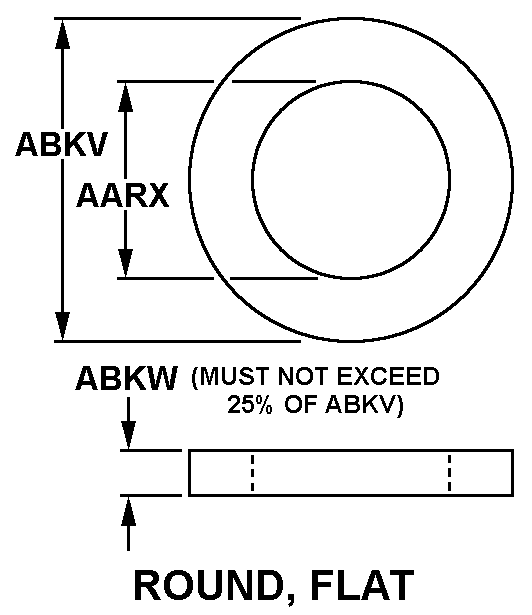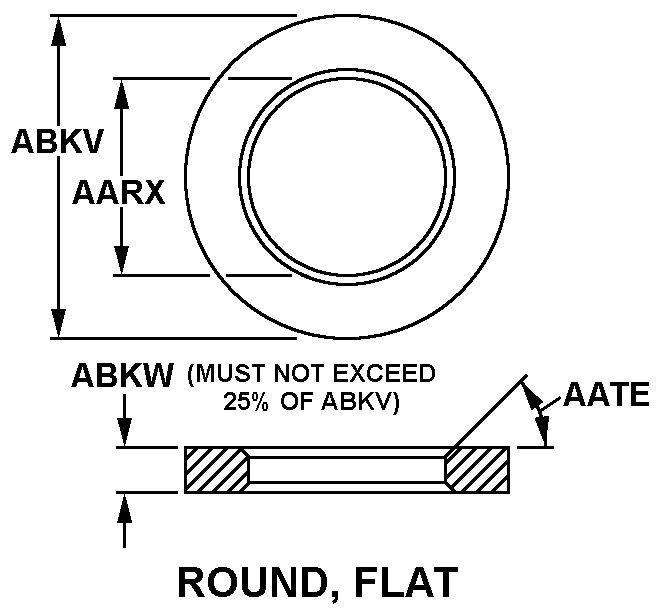5970011669477
Price Quote Get an up to date pricing and availability quote for this product. Order online or over the phone.
Quality Commitment
Serving our customers with quality and safety first.
- AS9120 Certified
- Audited supply chain
- ITAR Registered
- DDTC Registered
- HAZMAT Certified
- Customer service objectives
- Every product 100% inspected

5970-01-166-9477 Specification Set by the OEM (see RNCC code 3)
natural
0.196in.
1.625in.
0.125in.
125 microinch finish surfce
plastic, nylon, glass fiber, L-P-395, type 1, grade a, class 1
round, flat
as differentiated by special features
Cross Reference Parts Part numbers that meet the specification outlined on this page and set by the OEM
Identification Item Identification Guide (IIG) and Item Name Code (INC)




Definition Definition of approved item name (AIN): "INSULATOR,WASHER"
An insulator that is essentially thin and flat, with one through hole centrally located. The general shape may vary by the addition of features such as beveled edges, indented surfaces, through hole keys, and/or peripheral flats. The thickness measured between the two parallel bearing surfaces must not exceed 25 percent of the outside diameter or the shortest distance between peripheral flats. The thickness measured between the two parallel bearing surfaces must not exceed 25 percent of the outside diameter or the shortest distance between peripheral flats. Excludes items with more than one hole. See also insulator, disk; insulator, bead; insulator, bushing; and insulator, plate
Packaging & Dimensions Packaging instructions, special markings, and approx. weight/dims
Packing shall be accomplished to meet the performance test requirements of astm-d4169, distribution cycle 18, assurance level 1.
Packing shall be accomplished in accordance with table c.ii for the packing level specified. closure, sealing and reinforcement shall be in accordance with the appropriate shipping container specification.
Packaging is in accordance with a procedural specification or a special packaging instruction (spi). the appropriate specification number will be shown in the clear in the supplemental data area.
Special requirements.
Packaging Codes
OPI: Optional Procedure Indicator Code. A one position alpha code that indicates the allowable deviations from the prescribed requirements.
SPI No.: Special packaging instructions number.
LVL A/B/C: Indicates the type of shipping container required for level A, B, or C maximum packing protection.
SPC Mkg: A two position code that identifies the special markings applied to the container, which is part of the total pack to protect the contained item during preservation, packing, storage, transit and removal from the pack.
5970-01-166-9477 Material Hazmat, Precious Metals, Criticality, Enviroment, and ESD
Indicates there is no information in the hmirs. The nsn is in a fsc in table ii of fed std 313 and a msds may be required by the user. The requirement for a msds is dependent on a hazard determination of the supplier or the intended end use of item.
Item does not contain precious metal.
The item is a non-aviation critical safety item (csi) whose failure will result in serious damage to equipment or serious injury or death to personnel.
Identification Codes
HMIC: Hazardous Material Indicator Code. A one position code that identifies a hazardous item.
PMIC: Precious Metal Indicator Code. A one position code which identifies items that have precious metals as part of their content. precious metals are those metals generally considered to be uncommon, highly valuable, and relatively superior in certain properties such as resistance to corrosion and electrical conductivity.
ESD: Electrostatic Discharge. Indicates if an item is susceptible to electrostatic discharge or electromagnetic interference damage. electrostatic discharge damage occurs when an accumulation of static electricity generated by the relative motion or separation of materials is released to another item by direct contact. electromagnetic interference damage occurs when an item comes into proximity with an electrostatic or magnetic field.
ENAC: Enviromental Attribute Code. Identifies items with environmentally preferred characteristics.
CRITL: Criticality Indicator Code. Indicates an item is technically critical by tolerance, fit, application, nuclear hardness properties, or other characteristics.






